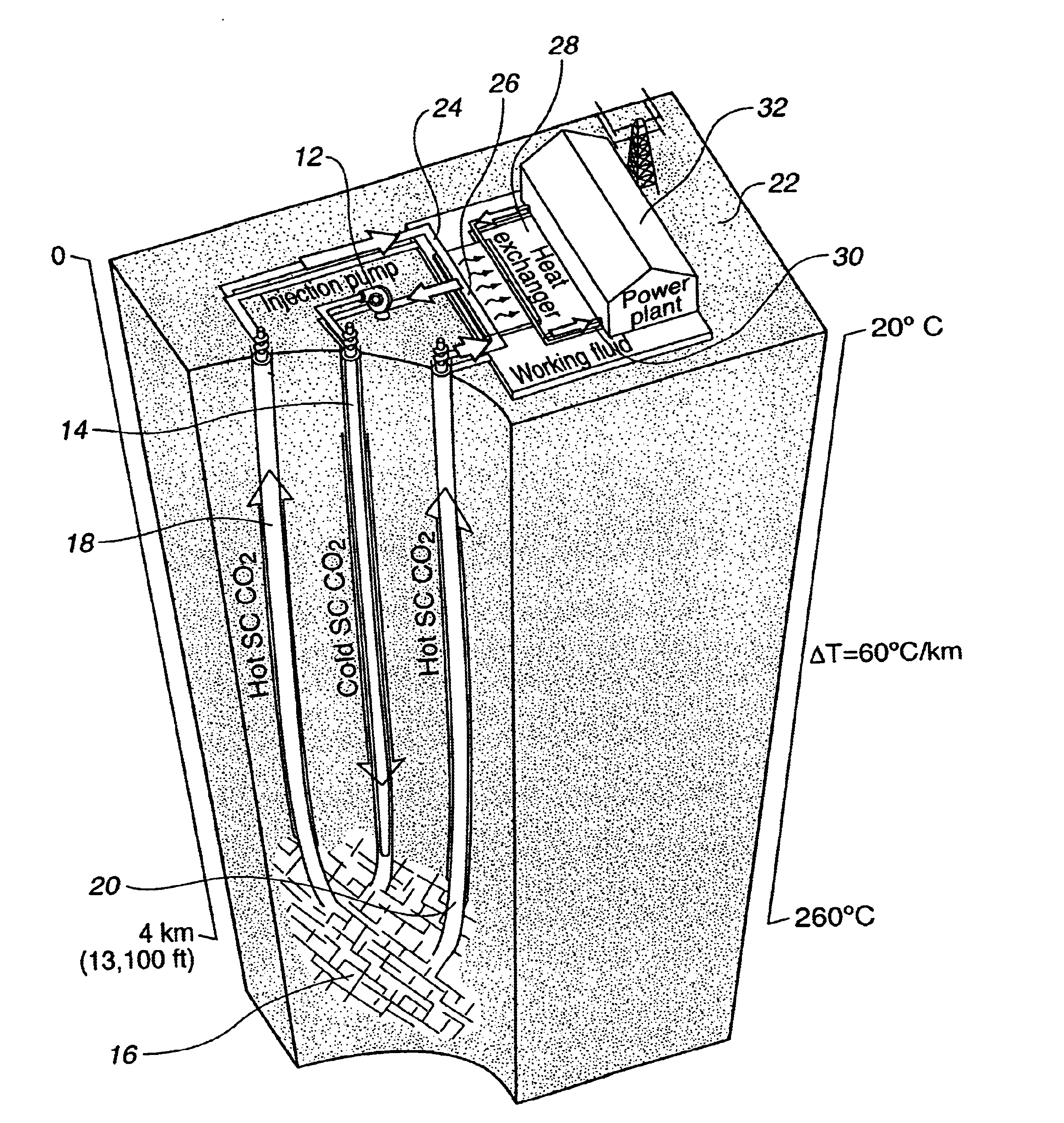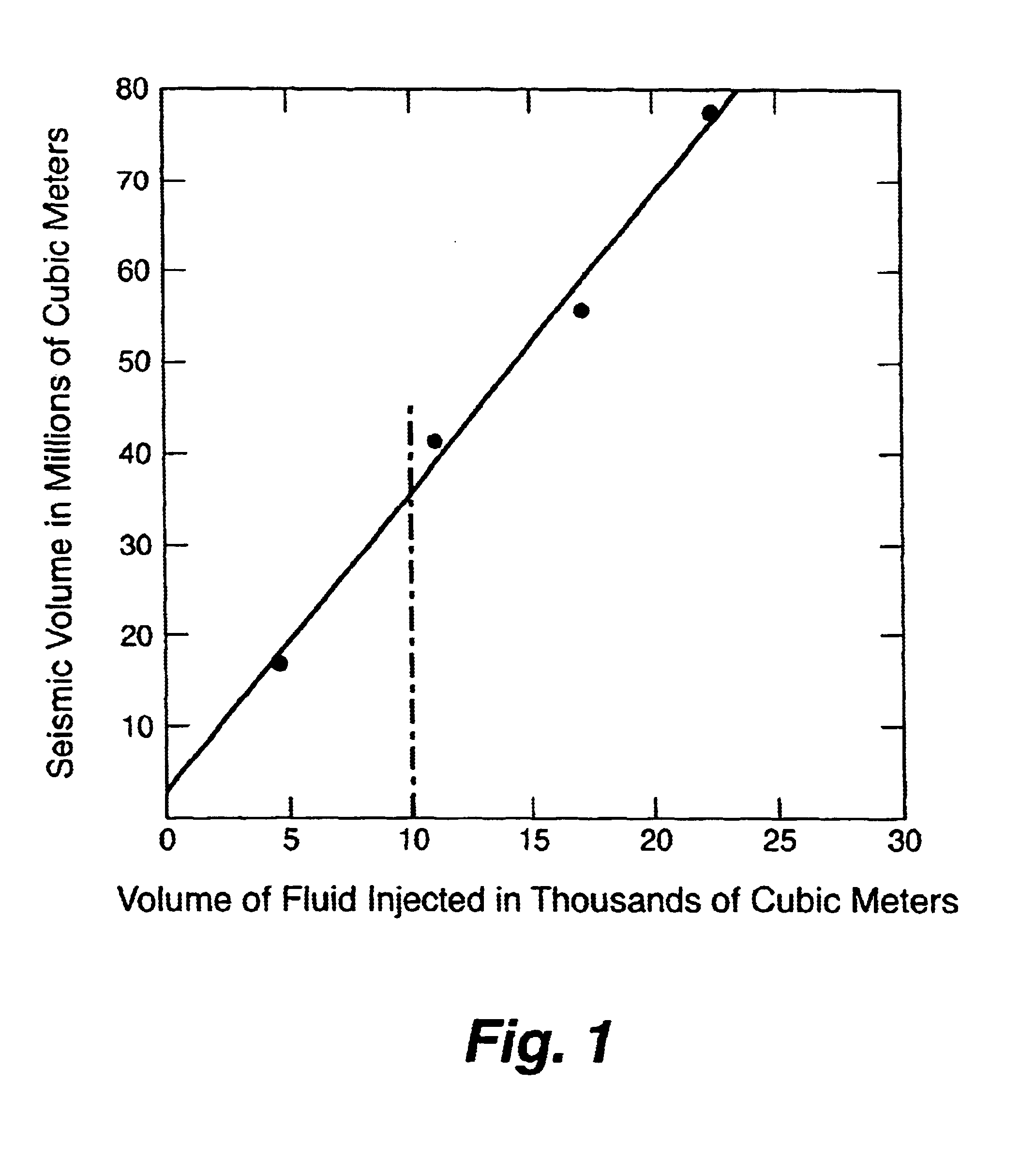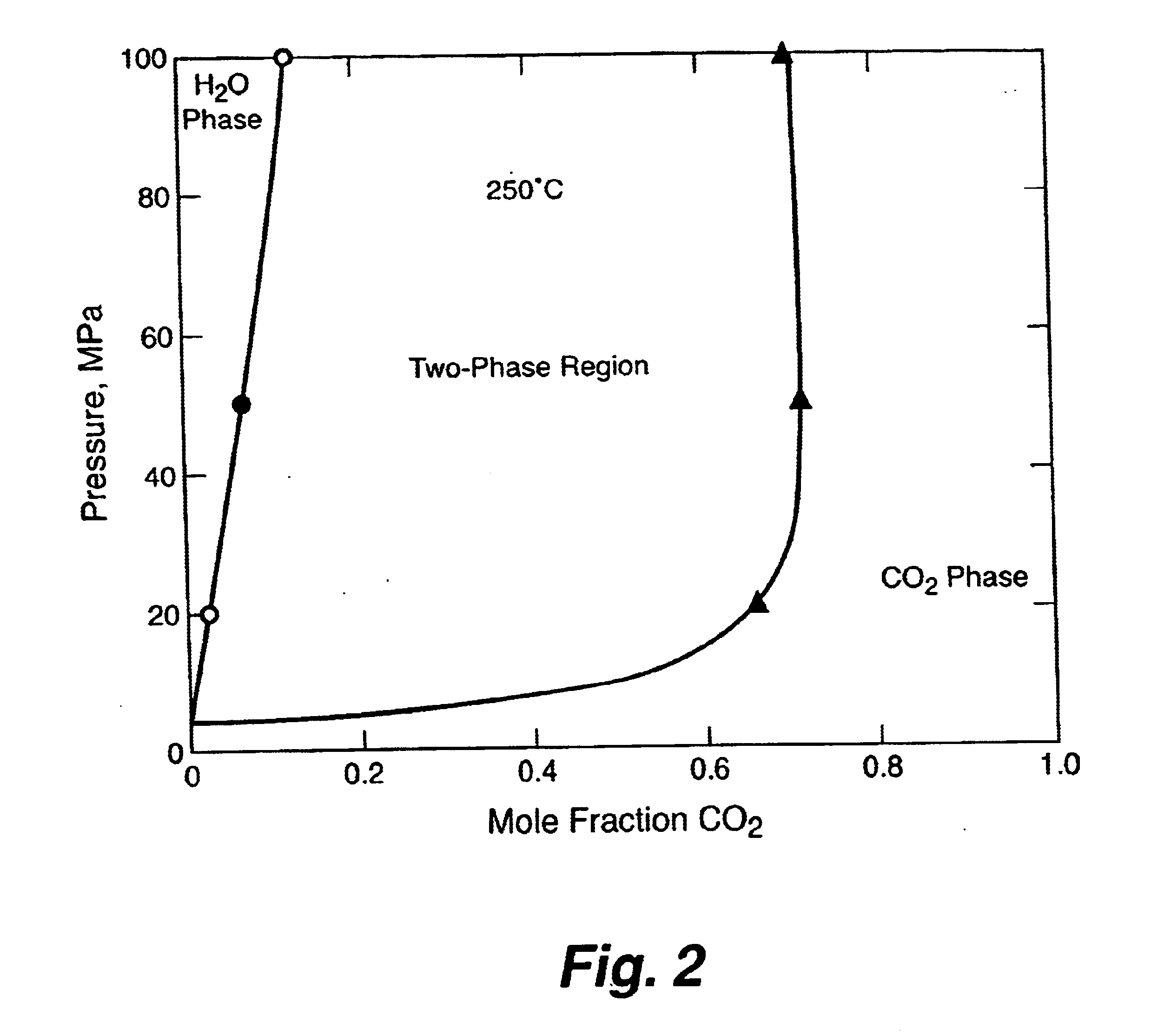Geothermal energy production with supercritical fluids
a technology of supercritical fluids and geothermal energy, which is applied in the direction of machines/engines, mechanical equipment, and borehole/well accessories, etc., can solve the problems of silica dissolution and reprecipitation problems, corrosion and undesirable deposits on turbine blades and other metallic surfaces in power plants and heat exchangers, and substantial obstacles to operating a hot dry rock geothermal reservoir
- Summary
- Abstract
- Description
- Claims
- Application Information
AI Technical Summary
Problems solved by technology
Method used
Image
Examples
example i
In a constructive reduction to practice using data from an analogous geothermal production system, a confined hot dry rock reservoir is created by fracturing a region of hot, dry igneous Precambrian crystalline rock located at Fenton Hill in the Jemez Mountains of north central New Mexico. Core samples of igneous and metamorphic rock obtained from depths ranging from 1.2 to 2.8 km show that the mean in-situ rock mass porosity is about 0.009% under in-situ stress conditions, and that the corresponding permeability is of the order of 0.1 to 0.01 microdarcies.
FIG. 4 is a graph of measured permeabilities for three granitic core samples from Fenton Hill relative to the effective pressure.
Following the drilling and completion of a full-diameter deep injection well to a depth of about 4 km, the well is prepared for the subsequent fracturing operation by pressure-isolating the bottom 500 m or so of the uncased wellbore. This is done by installing and cementing in a scab liner about 500 mete...
example ii
In a constructive reduction to practice, a half-year pre-production test of the confined hot dry rock reservoir constructively created in Example I is made.
Following the reservoir creation and flow loop development phases of Example I, the hot dry rock reservoir is flow-tested for a period of about half a year to establish and verify all the necessary operating parameters for the design of an appropriate surface power plant or other heat utilization system.
The parameters that need to be measured and verified are:
(a) the geofluid production temperature;
(b) the production flow rate and the reservoir pressure drop and reservoir flow impedance, all as functions of injection and production pressure levels;
(c) the distribution of the flow impedance across the reservoir;
(d) the amount of water dissolved in the produced supercritical carbon dioxide as a function of time--and the success in methods of water removal; and
(e) the temporal variation in the rate of diffusion of the geofluid outwa...
PUM
 Login to View More
Login to View More Abstract
Description
Claims
Application Information
 Login to View More
Login to View More - R&D
- Intellectual Property
- Life Sciences
- Materials
- Tech Scout
- Unparalleled Data Quality
- Higher Quality Content
- 60% Fewer Hallucinations
Browse by: Latest US Patents, China's latest patents, Technical Efficacy Thesaurus, Application Domain, Technology Topic, Popular Technical Reports.
© 2025 PatSnap. All rights reserved.Legal|Privacy policy|Modern Slavery Act Transparency Statement|Sitemap|About US| Contact US: help@patsnap.com



